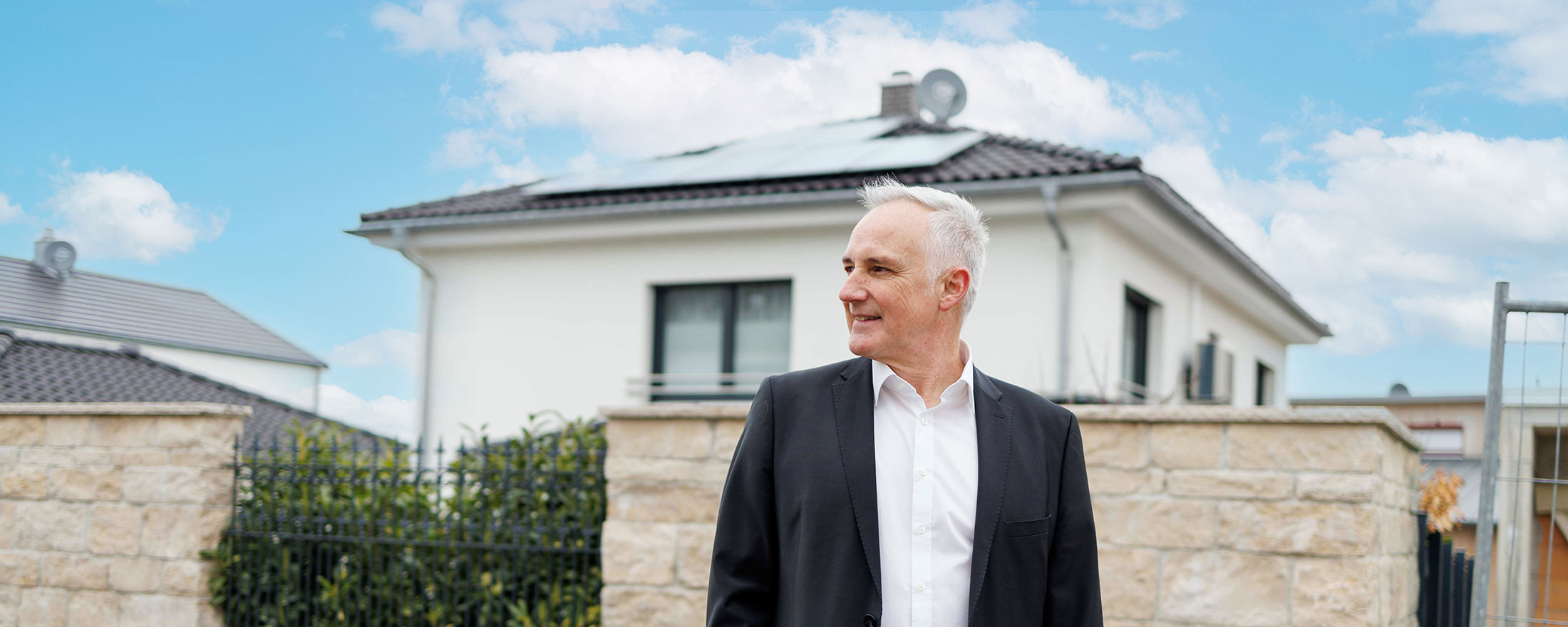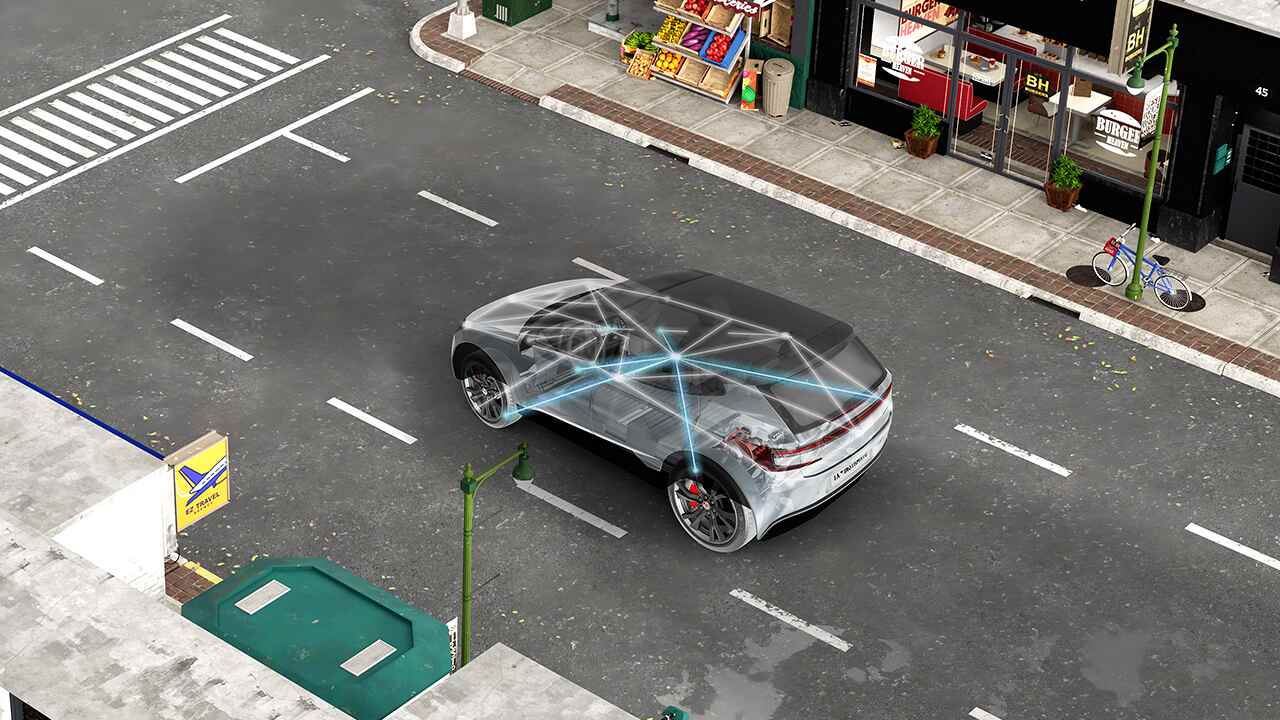Analog and embedded processing products are enabling electrification through smarter, reliable and more accessible solar, energy storage and electric-vehicle charging systems

Semiconductors help Harald Parzhuber live life sustainably.
The 36 solar panels on his roof, the solar inverter that converts energy from the sun into electricity that powers his home, the battery that stores electricity, the electric vehicle charger mounted on his garage’s wall and his hybrid EV all rely on innovative semiconductor technology.
"To move toward a future where we use fewer non-renewable energy sources, we must increase electrification," said Harald, who leads a team at our company that designs high-voltage power conversion systems used in solar energy generation and energy storage. “Semiconductors are transforming how we generate, store and consume energy.”
At the heart of the renewable energy system at Harald’s home near Munich – and at the heart of millions of other structures and similar grid-level systems that increasingly are enabling entire communities, factories and more to begin producing and consuming energy sustainably – are technologies from our company that help designers develop smaller and more efficient and affordable systems:
Power conversion: Our C2000™ real-time microcontrollers enable efficient power conversion for the complex power topologies typical of high-voltage systems, such as wide-bandgap devices like gallium nitride or silicon carbide FETs.
“Our technology moves data very quickly and with very low latency,” said Matt Watson, who manages our company’s C2000 business unit. “A low-latency signal chain is critical to retain as much energy in the power transfer as possible to reduce thermal loss and to fit in ever-smaller sizes. This allows design engineers to break new barriers in power efficiency, power density and cost so energy efficiency can be more accessible to more people. This is especially relevant, for example, in energy-storage systems where power efficiency and size are key adoption criteria.”
Current and voltage sensing: Managing energy in real time is crucial for getting the best performance from applications to help improve grid stability and performance. Our precise current and voltage sensing technologies enable accurate metering and increase safety by managing over-voltage, over-current and ground-fault detection.
“Energy is becoming scarcer and more expensive,” said Henrik Mannesson, general manager for Grid Infrastructure systems engineering at our company. “Many people want to measure and understand how much energy they’re using and how much it costs. Current and voltage-sensing technology also enables residents to calculate power so they can decide how to use the energy their solar system generates. Every home with solar panels or storage can consume solar energy part of the day, produce energy and store it, or even sell it back to the grid. We need intelligence for every one of those options, and that intelligence comes from being able to measure voltage and current. Semiconductors sit directly at the point of measurement.”
Edge processing and communication: Applications need to connect to the grid and to people through easy-to-use interfaces to enable technology such as vehicle-to-grid or plug-and-charge. Our high-performance processors enable local computing in the real world for faster, more secure processing. By pairing these processors with our easy-to-implement connectivity products and software, designers can enable seamless, more reliable communication between systems such as a micro inverter and between a home energy system and its user.
“A decision whether to sell energy back to the grid or store it in a battery is probably going to be based on the current energy price,” Henrik said. “I may want to sell energy when the price is higher and store it when the price is lower. A smart meter or home-energy system can track the prices and make a smart decision about how I’m going to operate the system.”
Battery management: Grid performance can be optimized by harvesting and storing energy and by returning energy to the grid during peak times. Our best-in-class battery monitoring and energy storage solutions address high energy demands and enable access to energy when it’s needed the most.
“The sustainable future relies in part on electrification in our homes and at the grid-infrastructure level,” Henrik said. “The analog and embedded processing products in modern renewable energy applications are evolving to enable smarter, reliable and more accessible solar, energy storage and EV charging systems.”
Generating electricity renewably
In much of the world today, electric generation is still an electro-mechanical process. Fuels such as coal, natural gas or nuclear energy push fluid – water, steam, air or combustion gases – to turn a turbine. The turbine’s shaft is connected to a generator. The generator produces mechanical energy that is distributed as alternating current through networks of power lines and into homes and businesses. And the lights turn on when you flip a switch on the wall.
In a world of renewable energy sources such as solar power, there is no generator that produces power. With solar energy, electricity is generated when sunlight is absorbed by photovoltaic cells and billions of electrons break free. The electrons are harnessed as direct current and converted in a solar inverter, where semiconductors measure voltage and current to control energy, decide how to use it, and convert the energy into an alternating current. That energy can be used directly when you flip on the light switch, stored in batteries or returned to the grid to help manage demand.

Moving toward electrification
For Harald, using renewable energy is about personal responsibility.
“Impact starts with the individual,” he said. “We should not wait for regulations about conserving power.”
So, when Harald and his wife, Alexandra, built their home in 2018, they designed it to accommodate solar panels. Three years later, they installed 36 panels on their roof, a solar inverter, a battery to store energy from the sun and a charger mounted on the wall of their garage to keep their hybrid electric vehicle powered. As a result, their use of electricity from the grid has plunged by two-thirds, and what electricity they do use from the grid is generated from renewable sources such as wind and solar.
With energy costs on the rise, it wasn’t long before Harald’s neighbors started asking him for recommendations about solar installations and how they could cut their energy usage.
“People want to be more aware of their energy use and where it comes from,” he said. “If everybody thinks like this, it can have an impact on a broader scale. We need to move toward electrification sooner rather than later. I’m very passionate about this.”

